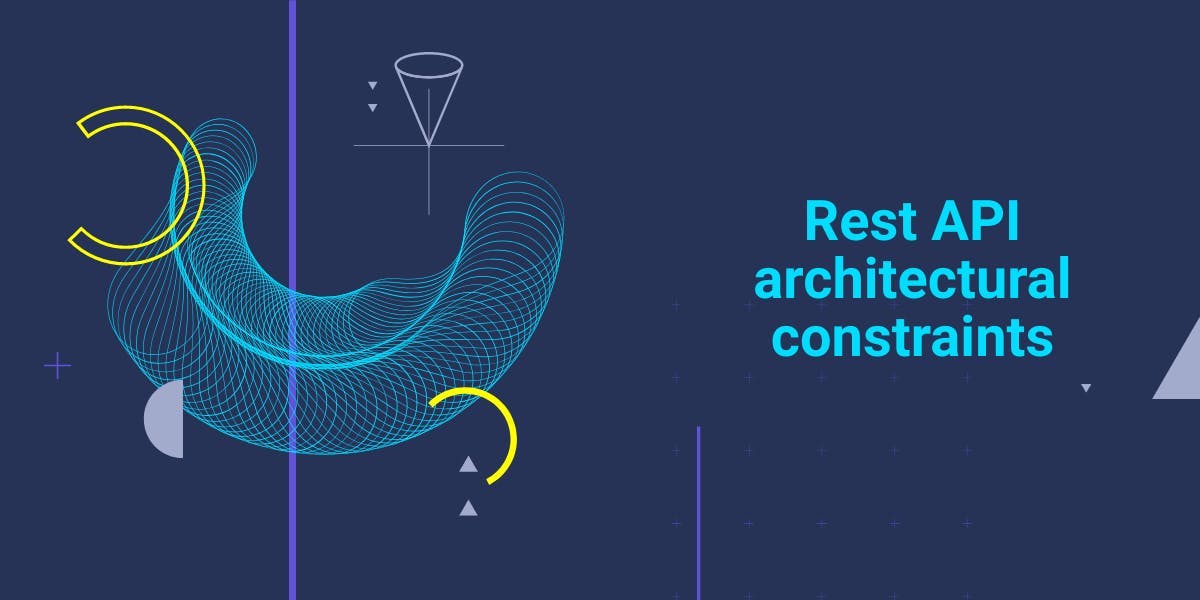Rest API architectural constraints
Sorin-Gabriel Marica on Dec 08 2022

APIs come in many shapes and sizes. While plenty of developers have APIs to thank for making their jobs more manageable in a hundred different ways, not many actually take the time to learn more about these interfaces.
We get it. Time is limited, and understanding what defines a REST API might not be useful for everyone. We won’t deny that, but there’s a reason why just about anyone should learn this: it’s damn interesting. Plus, if you want to design or work with an API, it pays to know more about it.
So, in this article, we’ll take a look under the hood of REST APIs and understand how their design principles have made them the stape software they are today.
What it means to be RESTful
The famous abbreviation stands for “Representational State Transfer,” which is a software architectural style. Its most common use is to facilitate the use of Web services with a standardized, universal approach.
These Web services offer their Web resources in a textual representation and allow them to be read and processed with a stateless protocol. The operations that a client can do are predefined and well-known, generally based on the HTTP protocols.
RESTful APIs and software aren’t based on some technological or programming advancement. They aren’t even that new, being first thought up in 2000. The idea behind REST is to impose certain rules upon the API so that you get more performance, scalability, simplicity, modifiability, visibility, portability, and reliability.
Those are a lot of benefits, but how do REST APIs achieve them, you may ask? Simple, by following six constraints. In fact, these rules are the most defining features of the RESTful architectural style.
The six architectural constraints of REST APIs
1. Client-server architecture
An API’s job is to connect two pieces of software without limiting their own functionalities. This objective is one of the core restrictions of REST: the client (that makes requests) and the server (that gives responses) stay separate and independent.
When done properly, the client and server can update and evolve in different directions without having an impact on the quality of their data exchange. This is especially important in various cases where there are plenty of different clients a server has to cater to. Think about weather APIs — they have to send data to tons of different clients (all types of mobile devices are good examples) from a single database.
2. Statelessness
For an API to be stateless, it has to handle calls independently of each other. Each API call has to contain the data and commands necessary to complete the desired action.
An example of a non-stateless API would be if, during a session, only the first call has to contain the API key, which is then stored server-side. The following API calls depend on that first one since it provides the client’s credentials.
In the same case, a stateless API will ensure that each call contains the API key and the server expects to see proof of access each time.
Stateless APIs have the advantage that one bad or failed call doesn’t derail the ones that follow.
3. Uniform Interface
While the client and the server change in different ways, it’s important that the API can still facilitate communication. To that end, REST APIs impose a uniform interface that can easily accommodate all connected software.
In most cases, that interface is based on the HTTP protocols. Besides the fact that it sets rules as to how the clients and the server may interact, it also has the advantage of being widely known and used on the Internet. Data is stored and exchanged through JSON files because of their versatility.
4. Layered system
To keep the API easy to understand and scale, RESTful architecture dictates that the design is structured into layers that operate together.
With a clear hierarchy for these layers, executing a command means that each layer does its function and then sends the data to the next one. Connected layers communicate with each other, but not with every component of the program. This way, the overall security of the API is also improved.
If the scope of the API changes, layers can be added, modified, or taken out without compromising other components of the interface.
5. Cacheability
It’s not uncommon for a stateless API’s requests to have large overhead. In some cases, that’s unavoidable, but for repeated requests that need the same data, caching said information can make a huge difference.
The concept is simple: the client has the option to locally store certain pieces of data for a predetermined period of time. When they make a request for that data, instead of the server sending it again, they use the stored version.
The result is simple: instead of the client sending several difficult or costly requests in a short span of time, they only have to do it once.
6. Code on Demand
Unlike the other constraints we talked about up to this point, the last one is optional. The reason for making “code on demand” optional is simple: it can be a large security risk.
The concept is to allow code or applets to be sent through the API and used for the application. As you can imagine, unknown code from a shady source could do some damage, so this constraint is best left for internal APIs where you have less to fear from hackers and people with bad intentions. Another drawback is that the code has to be in the appropriate programming language for the application, which isn’t always the case.
The upside is that “code on demand” can help the client implement their own features on the go, with less work being necessary on the API or server. In essence, it permits the whole system to be much more scalable and agile.
Are REST APIs the way of the future?
The focus of RESTful design is on efficiency and scalability in a web-dominated world. As you might imagine, this has made architecture quite popular, and we’ll most likely see it become even more widespread in the coming years.
The primary concern for many developers and security experts is how exploitable web APIs can be if created without proper care. Of course, hackers have been and will continue to be a problem for APIs and software in general. Still, it’s not like we’ll stop using them. Rather, it’s up to security experts to find new ways to protect our programs.
That way of thinking, together with the goal of making developers lives easier is what lead us to develop WebScrapingAPI, a data extraction REST API that handles everything from proxy rotation to Javascript rendering and solving CAPTCHAs. Check it out to see what a REST API can do!
News and updates
Stay up-to-date with the latest web scraping guides and news by subscribing to our newsletter.
We care about the protection of your data. Read our Privacy Policy.

Related articles

Explore the complexities of scraping Amazon product data with our in-depth guide. From best practices and tools like Amazon Scraper API to legal considerations, learn how to navigate challenges, bypass CAPTCHAs, and efficiently extract valuable insights.


Explore the transformative power of web scraping in the finance sector. From product data to sentiment analysis, this guide offers insights into the various types of web data available for investment decisions.


Learn how to use Node.js and our API to scrape nearby sellers from Google Shopping. Extract valuable data quickly and easily with our professional web scraper.
